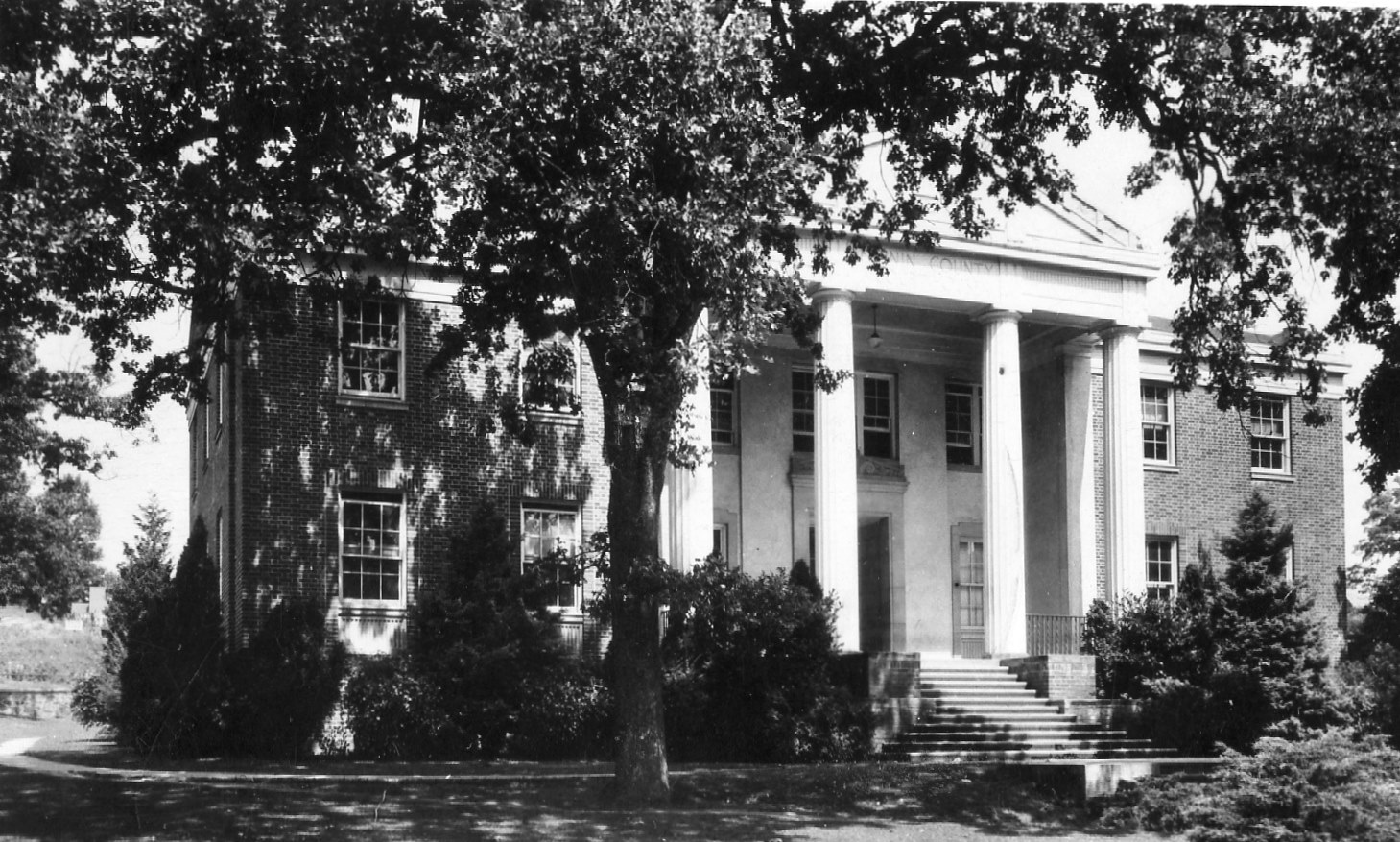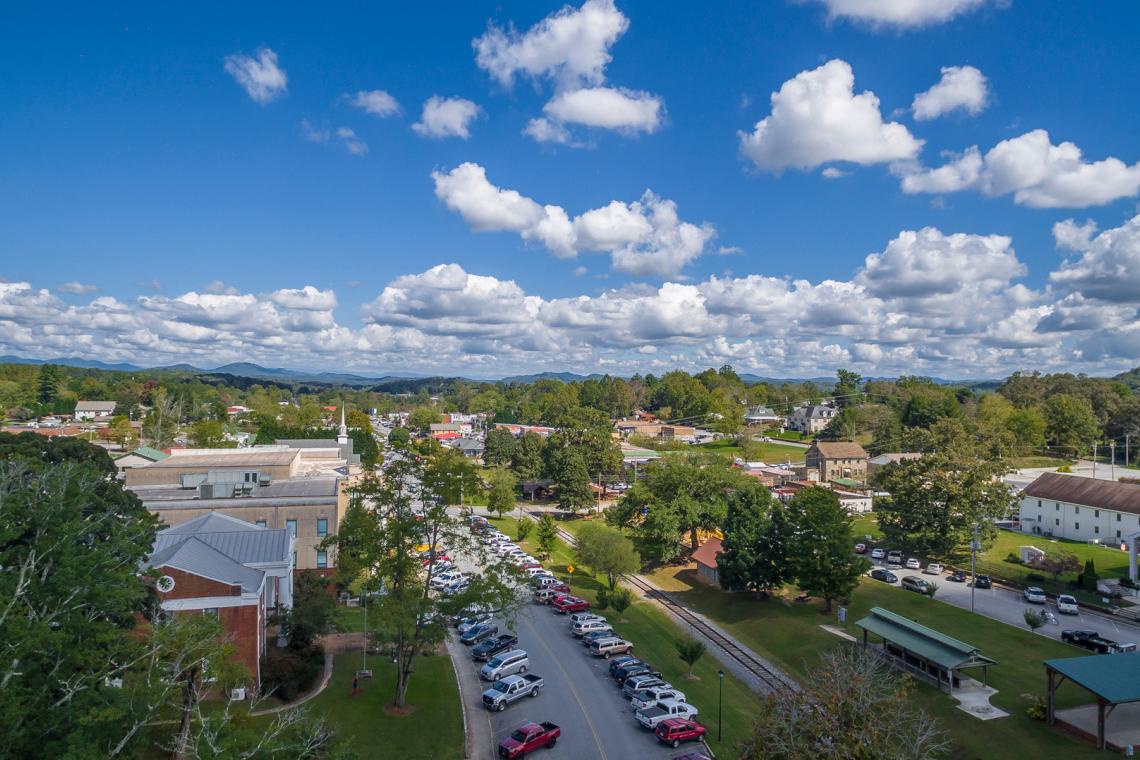Blue Ridge
Incorporated in 1886, the city of Blue Ridge is the county seat of Fannin County. The city is named for the southern reach of the Appalachian Mountain range that stretches into the area, and the city is known for its beautiful mountain views. Blue Ridge is nicknamed the “Trout Fishing Capital of Georgia,” with access to Lake Blue Ridge and the Toccoa River that draws tourists from near and far. Visitors to downtown Blue Ridge can take a ride on the Blue Ridge Scenic Railway, which operates from the city’s historic downtown depot.
June 20–July 17, 2020
Blue Ridge Mountain Arts Association
420 West Main Street
Blue Ridge, GA 30513
Stories from the Blue Ridge Community
Growing LGBTQIA+ Communities

Downtown Blue Ridge, courtesy of the City of Blue Ridge.
The mountain city of Blue Ridge is home to a growing and active LGBTQIA+ community through its businesses, residents, and visitors. This city celebrates this diversity, and in 2019, was named as the most gay-friendly city in Georgia by Thrillist. Both the city and county are home to one of the largest populations of gay couples in the state.
Many of the businesses in downtown Blue Ridge are LGBTQIA+ owned and operated, which fosters an atmosphere where all feel welcome. The recent influx of LGBTQIA+ residents and business owners has helped revive the downtown economy with new boutiques and restaurants, bringing new jobs to a community that was hit hard by the decline of its once-prosperous logging industry.
Main Street Culture

Image of the Swan Drive-In marquee, courtesy of the Swan Drive-In
Theaters have long been a vital part of community life, providing entertainment from plays and musicals to vaudeville performances. When they began to pop up in the early 1990s, theaters brought the outside world to small-town Georgia.
By the 1930s, theater owners converted their existing theaters or built new ones to accommodate the burgeoning use of film. In recent years, as film technologies have changed and opportunities for other forms of entertainment have grown, many historic rural theaters have faced closure or abandonment. Some historic theaters have endured and continue to serve their communities.
Aside from brick and mortar theaters, the drive-in theater also became a popular way of viewing movies in the 1950s. The Swan Drive-In in Blue Ridge opened in 1955 and remains one of only a handful of drive-in theaters in operation in Georgia today. When it opened, tickets were only 32 cents for adults and 15 cents for children. Today, the drive-in continues to be a gathering place for locals as well as tourists, who still relish enjoying a movie under the stars.
Downtown Revitalization

Image of Chester Brunnenmeyer’s Bar and Grill, courtesy of the Fannin County Chamber of Commerce and CVB.
Rural communities are no strangers to change, and Georgia’s rural communities are not comprised of individuals who give in easily to hardships. Many small, rural towns remain dedicated to keeping their economies thriving and their communities growing. While change—which often comes in the form of revitalization—can often be slow in coming, many communities have acknowledged the need for adaptation in order to build a thriving community.
In Blue Ridge, the historic Gartrell Hotel is one such space that was revitalized through preservation and repurposed to serve the changing needs of a community. The hotel was originally owned and operated by Annie and William Gartrell, and opened in the early 1900s with twelve tin-walled rooms. The hotel eventually closed, but today the historic space once again serves visitors and locals alike as the restaurant Chester Brunnenmeyer’s Bar and Grill. The reinvented historic space, nestled in downtown Blue Ridge, continues to bring the community together.
Preserving the Land

Mountain bikers explore the Chattahoochee-Oconee National Forest. Image courtesy of the Fannin County Chamber of Commerce and CVB.
The natural beauty of Georgia’s diverse landscape has appealed to residents and visitors from its early years. Today, the land still holds a strong attraction for those living in rural Georgia and for those living in Georgia’s cities who both share an appreciation for the outdoors. Preserving land for future generations has become a priority of national, state, and local governments.
Most of the Blue Ridge Mountains are part of the 750,000-acre Chattahoochee National Forest, managed by the U.S. Forest Service. Within its bounds are Georgia’s highest peaks, including Brasstown Bald (4,784 feet), Rabun Bald (4,694 feet), and Tray Mountain (4,430 feet).
Some of Georgia’s most visited state parks are also found in the Blue Ridge Mountains, including Amicalola Falls, Black Rock Mountain, Tallulah Gorge, Unicoi, and Vogel.
 The Blue Ridge Mountains in northeast Georgia make up the state’s highest mountain range. The range of rugged ridges and rounded, weathered peaks varies in elevation from 1,600 to 4,700 feet and harbors spectacular mountain scenery as well as some of the world’s richest biological diversity.
The Blue Ridge Mountains in northeast Georgia make up the state’s highest mountain range. The range of rugged ridges and rounded, weathered peaks varies in elevation from 1,600 to 4,700 feet and harbors spectacular mountain scenery as well as some of the world’s richest biological diversity.
The Appalachian Trail is the world’s longest continuous hiking trail that is maintained and marked. Its route in Georgia follows the crest of the Blue Ridge Mountains, covering approximately 77 miles from its beginning at Springer Mountain to Bly Gap at the North Carolina border.
Fannin County was formed on January 21, 1854, when Governor Herschel Johnson signed a law that divided portions of Union and Gilmer counties to create Georgia’s 107th county.



